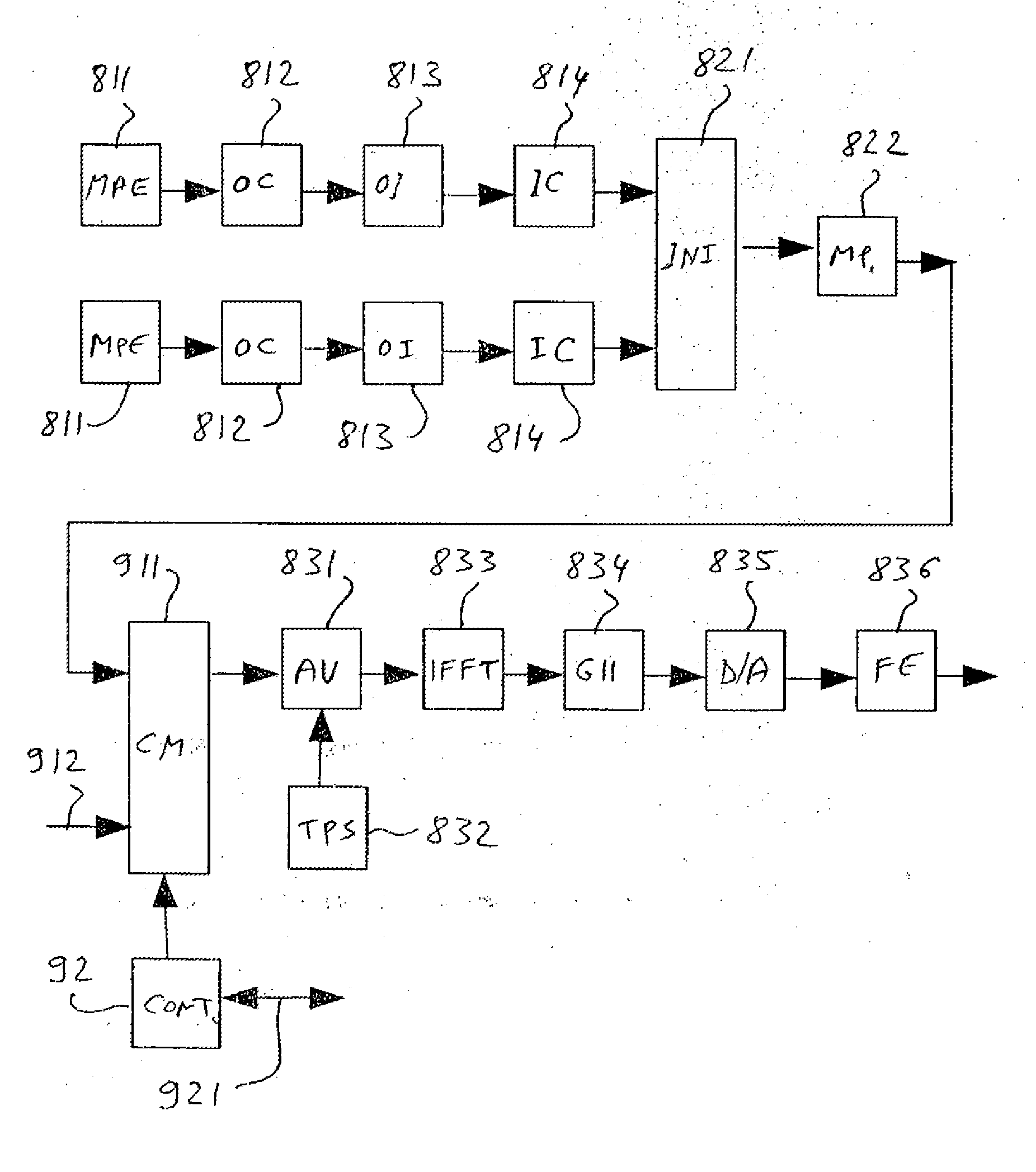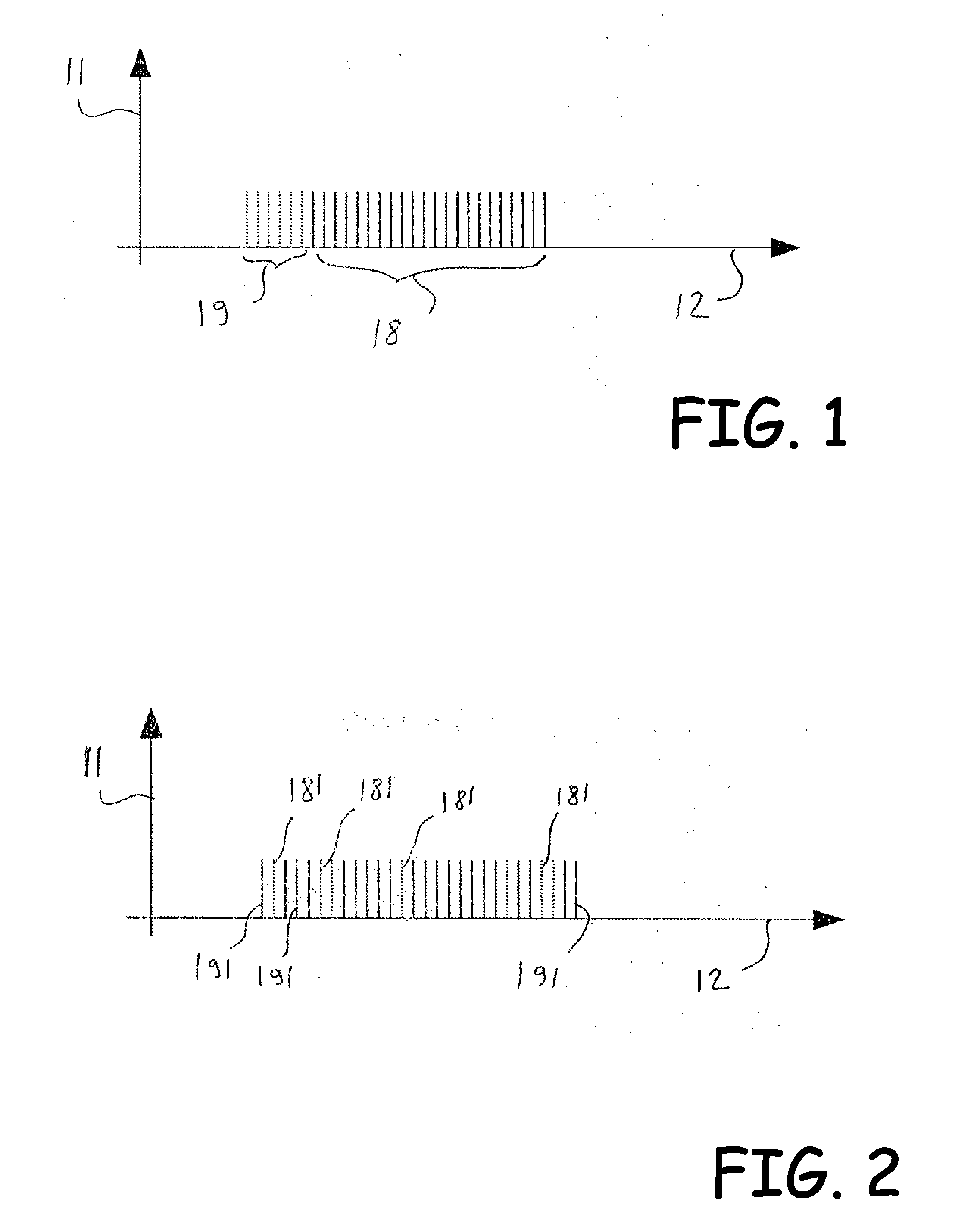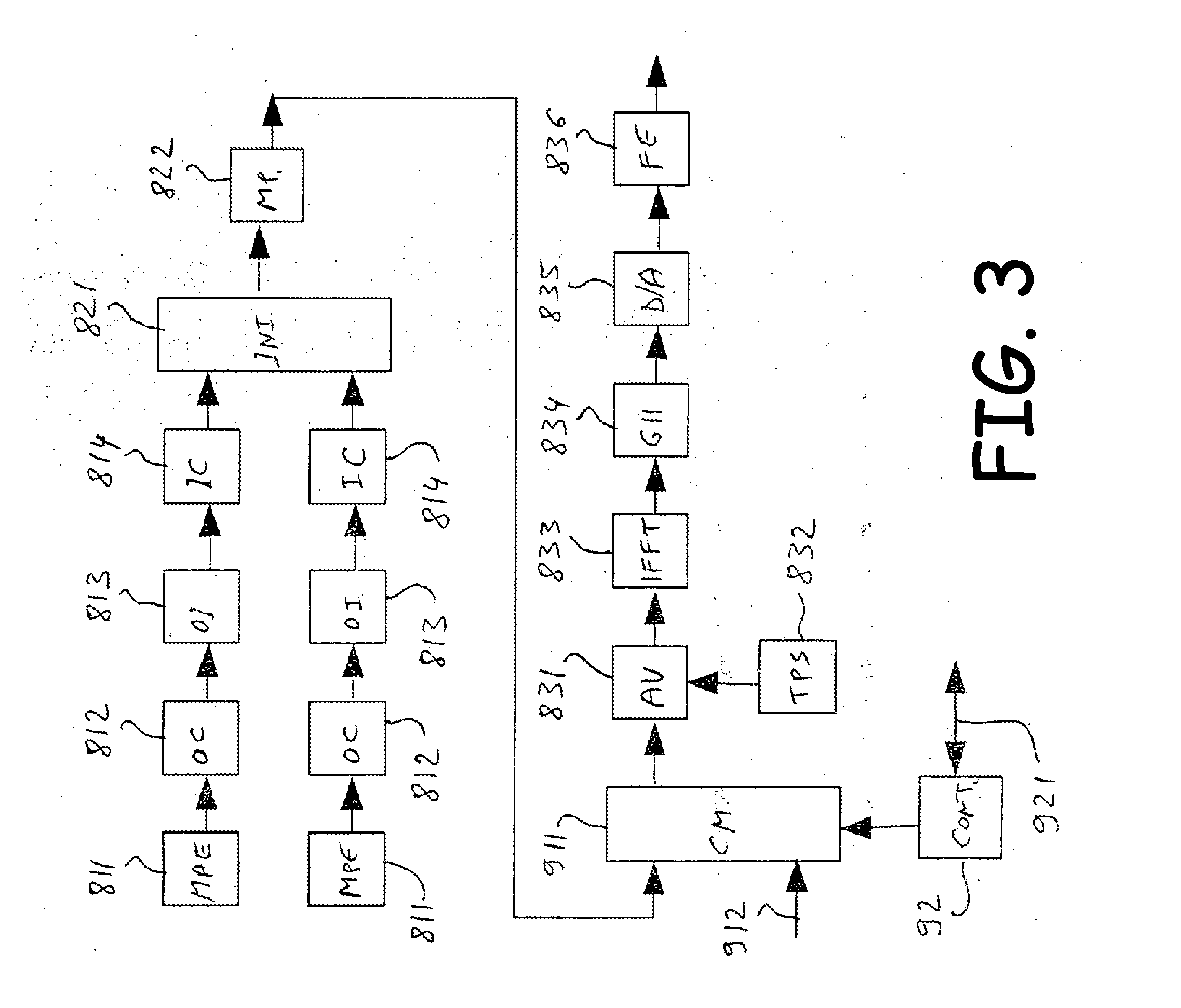Cellular network system
a network system and cell technology, applied in the field of cell networks, can solve the problems such as the difficulty of using ofdm in an interactive snf system, and achieve the effect of improving the signal to noise ratio (s/n) in the link, reducing the cost, and improving the performance system
- Summary
- Abstract
- Description
- Claims
- Application Information
AI Technical Summary
Benefits of technology
Problems solved by technology
Method used
Image
Examples
Embodiment Construction
[0055]A preferred embodiment of the present invention will now be described by way of example and with reference to the accompanying drawings.
[0056]FIG. 1 illustrates the spectrum of a mixed mode OFDM signal in the frequency domain, with amplitude axis 11 and frequency axis 12. The transmitted spectrum includes a broadcast spectrum 18 and a personalized data spectrum 19. The common data and the personalized data are treated differently in the system: The common data is allocated a fixed portion of the subcarriers 18 in all the base stations, whereas the personalized data is allocated different subcarriers in each base station and for each user, for example by dividing the spectrum band 19.
[0057]This achieves lower interference in a SFN system, wherein interference in the broadcast band is reduced using one method and system, whereas interference in the personalized band is reduced with a second method and system, as detailed below.
[0058]The separation in frequency in band 19 is nece...
PUM
 Login to View More
Login to View More Abstract
Description
Claims
Application Information
 Login to View More
Login to View More - R&D
- Intellectual Property
- Life Sciences
- Materials
- Tech Scout
- Unparalleled Data Quality
- Higher Quality Content
- 60% Fewer Hallucinations
Browse by: Latest US Patents, China's latest patents, Technical Efficacy Thesaurus, Application Domain, Technology Topic, Popular Technical Reports.
© 2025 PatSnap. All rights reserved.Legal|Privacy policy|Modern Slavery Act Transparency Statement|Sitemap|About US| Contact US: help@patsnap.com



